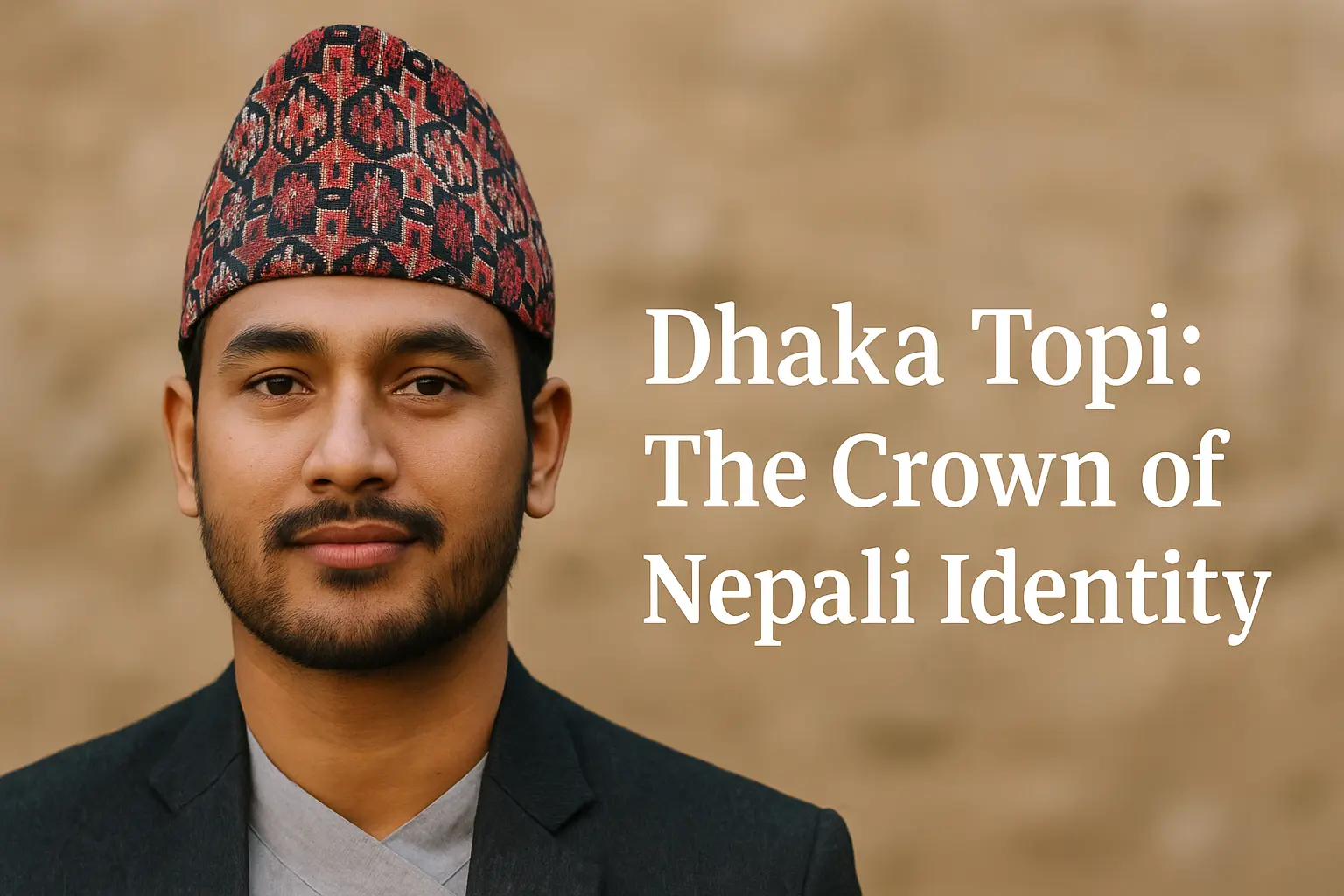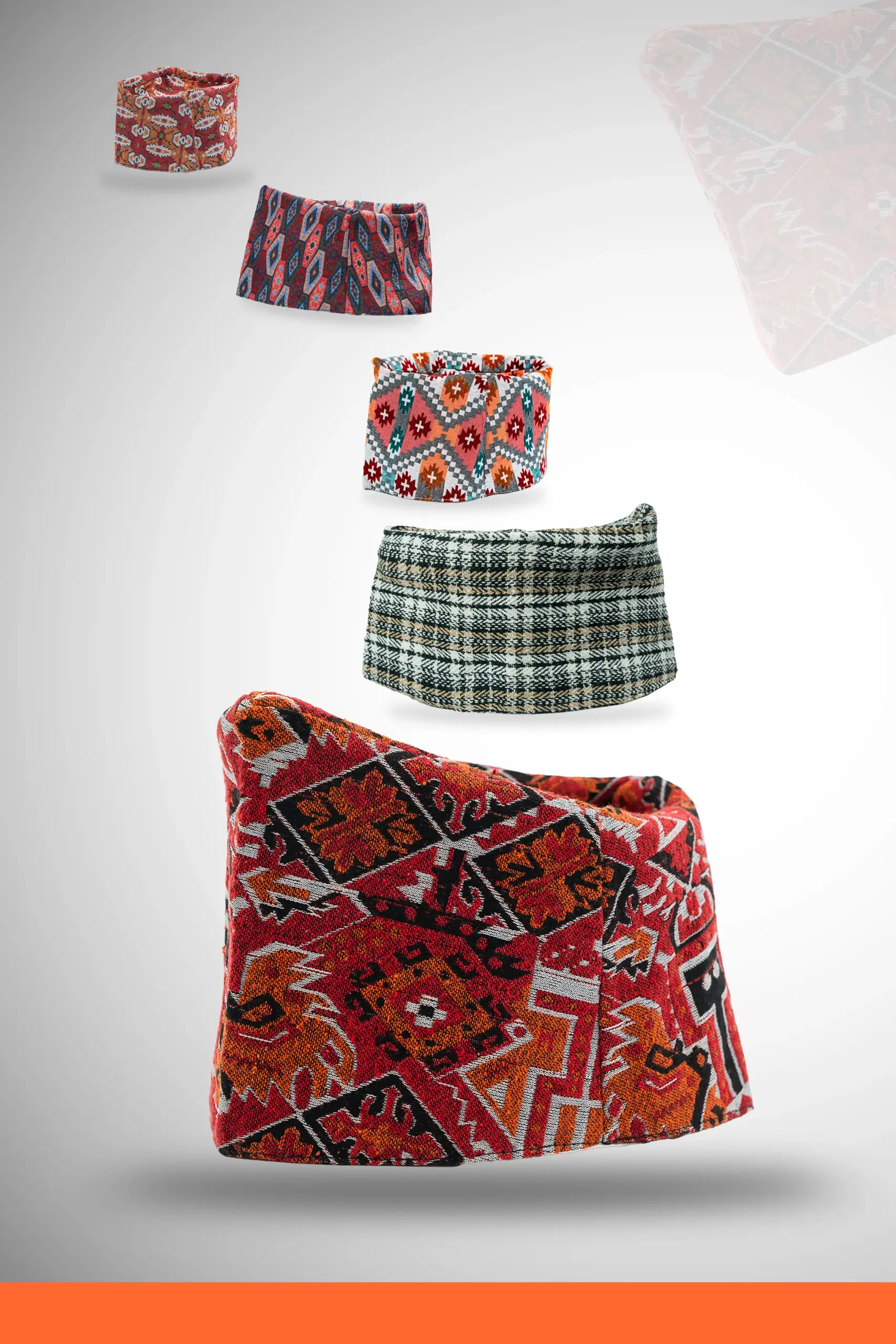Dhaka Topi: The Crown of Nepali Identity
Introduction
The Dhaka Topi is not just a piece of cloth — it is a crown of Nepali pride. Worn by men across Nepal for generations, this handwoven cap stands as a symbol of national identity, respect, and cultural unity. Whether paired with the Daura Suruwal or worn casually on special occasions, the Dhaka Topi carries the story of Nepal’s rich craftsmanship and heritage wherever it goes.
The Origin of Dhaka Topi
The word “Dhaka” comes from the fabric used to make the Topi, which originated from the Palpa district in western Nepal. This fabric, woven with intricate geometric patterns and vibrant colors, became a proud expression of local artistry. Over time, it spread across the country, with regions like Tansen, Ilam, and Janakpur developing their own unique Dhaka weaving styles.
The Dhaka Topi gained national importance during the reign of King Mahendra, who declared it a part of the official Nepali national dress. Since then, it has been worn by politicians, diplomats, students, and citizens alike as a mark of national pride and unity.
Cultural Significance
The Dhaka Topi holds deep symbolic meaning in Nepali society:
- Identity & Pride – It distinguishes Nepalis from other cultures and represents the dignity of Nepali men.
- Respect & Honour – Worn during festivals, religious events, and ceremonies to show reverence.
- Gift of Blessing – Presented to guests, elders, or dignitaries as a gesture of goodwill and respect.
- Cultural Connection – For Nepalis abroad, wearing the Dhaka Topi connects them emotionally to home and heritage.
In traditional belief, the Topi symbolizes humility — reminding the wearer to keep their head high with pride yet bow in respect.
The Art of Weaving Dhaka
Every Dhaka Topi begins with a story woven by skilled artisans using handlooms. The weaving process involves cotton or silk threads arranged in colorful patterns — often inspired by nature, geometry, or temple architecture.
Regions like Palpa (Palpali Dhaka) and Ilam (Purbeli Dhaka) are famous for their distinctive styles. Palpali Dhaka features bold geometric motifs and thicker fabric, while Purbeli Dhaka often uses softer textures and brighter color combinations.
Each Topi takes several hours — sometimes days — to complete, representing the patience and precision of Nepali craftsmanship.
Modern Appeal & Global Recognition
While the Dhaka Topi remains a traditional symbol, it has also become a fashion statement among younger generations. Today, it’s worn at weddings, cultural programs, and even international events — representing Nepal’s cultural pride in a modern world.
Designers now experiment with different cuts, colors, and fits, giving the Topi a versatile charm that fits both tradition and trend. Celebrities, diplomats, and diaspora communities proudly wear the Dhaka Topi to celebrate Nepali identity on global stages.
Where to Find Authentic Dhaka Topis
At Amaghar.com, we offer a curated collection of authentic Nepali Dhaka Topis, handcrafted by local weavers across Nepal. From the classic Palpali Dhaka Topi to the vibrant Purbeli Dhaka styles, each piece carries a story of heritage and craftsmanship.
Whether you wear it during Dashain, Tihar, weddings, or simply as a mark of cultural pride, a Dhaka Topi from Amaghar ensures you wear more than fashion — you wear history.
Conclusion
The Dhaka Topi is more than an accessory — it is a symbol of who we are as Nepalis. It embodies pride, unity, and the enduring legacy of our culture. From the hills of Palpa to Nepali hearts around the world, the Dhaka Topi remains — proudly — the crown of Nepali identity.







